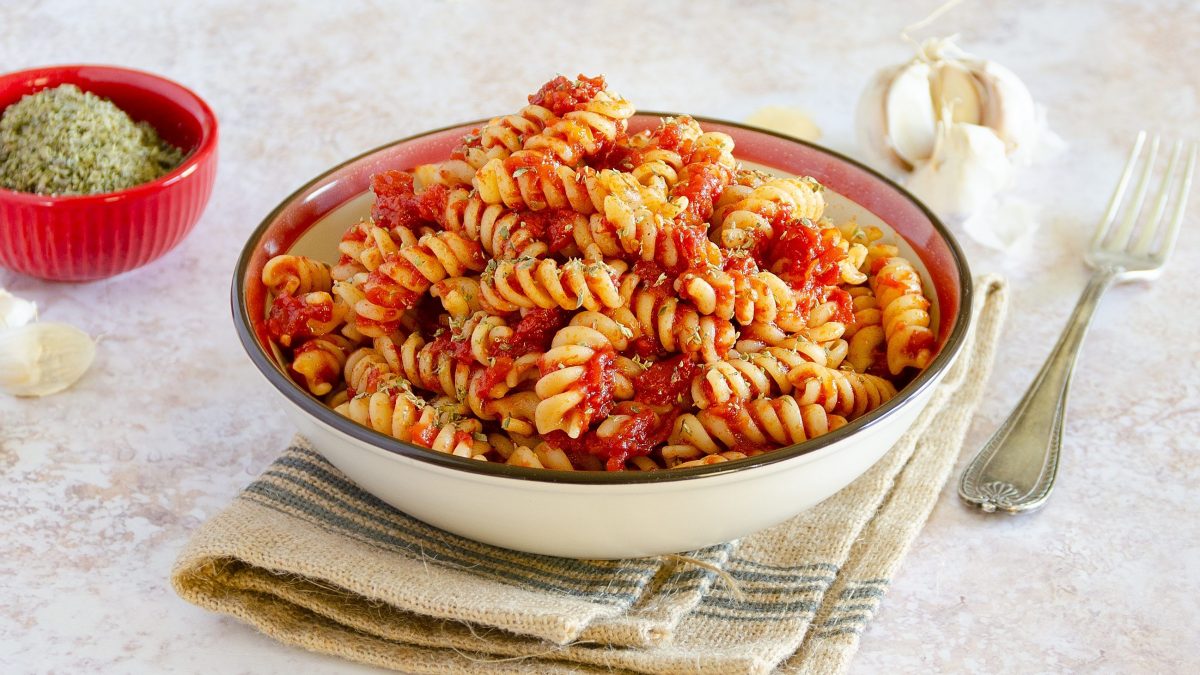
Marinara Pasta is a quick and tasty main course, made with a few simple, readily available ingredients, such as peeled tomatoes, sliced garlic, dried oregano, and short pasta such as fusilli. This easy and tasty dish, inspired by the famous Neapolitan pizza marinara, is ideal for a quick family lunch or a hastily arranged dinner with friends.
What is Marinara Pasta?
Marinara pasta, with its rich tomato-based sauce, traces its origins to southern Italy, particularly Naples and Sicily. The word "marinara" comes from "marinaro," meaning "of the sea," as sailors would prepare it using simple ingredients like tomatoes, garlic, olive oil, and herbs. Over time, tomatoes became a central part of Italian cooking, and marinara sauce evolved into the tangy, flavorful concoction we know today.
The dish made its way to the United States with Italian immigrants in the late 19th and early 20th centuries. As Italian-American communities flourished, marinara pasta became a beloved staple in homes and restaurants, symbolizing the immigrant experience. By the mid-20th century, it became a go-to comfort food for many, popularized by Italian-American eateries. Today, marinara pasta remains a cultural mainstay, easy to make, and loved for its simplicity.
Pro Tips for The Best Marinara Pasta
- Fresh, ripe tomatoes can make a significant difference in the flavor of your marinara sauce. If you're using canned tomatoes, opt for high-quality brands like San Marzano for a rich, sweet taste.
- Garlic is key to marinara sauce, but be sure to cook it gently in olive oil to release its fragrance without burning it. This will prevent a bitter taste and ensure a smooth, aromatic sauce.
- Allow the sauce to simmer for at least 20–30 minutes to enhance the flavors and help the tomatoes break down. This helps develop the sauce's rich, complex taste.
- When boiling your pasta, ensure it’s cooked al dente, meaning it should still have a slight bite to it. This will provide a better texture and ensure the pasta holds up well when tossed with the sauce.
- Before draining your pasta, save a cup of pasta water. Adding a little of this starchy water to your sauce helps thicken it and helps the sauce better adhere to the pasta.
- Once the pasta is cooked and drained, toss it directly into the marinara sauce and let it cook together for a minute or two. This allows the pasta to absorb the sauce, making the dish more flavorful.
Which Pasta Goes Best With Marinara Sauce?
In our recipe we used fusilli, but you can substitute them with rigatoni or penne rigate, or with another long pasta shape you have in your pantry, such as spaghetti, bavette, or linguine.
When Should You Add Marinara Sauce to Pasta?
You should add marinara sauce to pasta after it has been cooked and drained. Toss the pasta directly into the sauce while it's still hot, allowing it to absorb the flavors. Let it cook together for a minute or two to ensure the pasta is well-coated and the sauce is evenly distributed.
Can I Add Anything Else to The Pasta Dish?
If in season, you can replace the peeled tomatoes with sweet, juicy fresh cherry tomatoes. For a pleasantly spicy twist, you can flavor the sauce with a pinch of crumbled dried chili pepper. For a more savory result, you can enrich the cooking juices with anchovy fillets in oil, desalted capers, and sliced black olives.
You can also add ingredients like sautéed vegetables (such as mushrooms, bell peppers, or onions), protein like grilled chicken, shrimp, or meatballs, or even a sprinkle of Parmesan cheese for added richness.
What Can I Serve Marinara Pasta With?
You can serve it with a fresh green salad, garlic bread, or bruschetta for a light, flavorful meal. For a more filling option, try it alongside roasted vegetables or a simple antipasto platter with cured meats, olives, and cheese. A glass of red wine, such as Chianti or Merlot, can also complement the rich flavors of the marinara sauce beautifully.
Can I Make It Ahead of Time?
Yes, you can make marinara pasta ahead of time. While it's best to cook the pasta fresh, you can prepare the marinara sauce in advance and store it in the refrigerator for up to 3–4 days. When you're ready to serve, simply reheat the sauce and cook the pasta.
Does It Freeze Well?
Yes, marinara sauce freezes well. You can make a large batch, let it cool, and store it in an airtight container or freezer bag for up to 3 months. When you're ready to use it, simply thaw it in the fridge overnight and reheat on the stovetop. However, it’s best to freeze the sauce alone and add the pasta fresh when you're ready to serve, as pasta can become mushy after freezing and reheating.
How to Store Any Leftovers
To store leftover marinara pasta, place it in an airtight container and refrigerate it for up to 3 days. Make sure the pasta and sauce are fully cooled before storing to avoid condensation.
Ingredients
How to Make Fusilli Pasta With Marinara Sauce
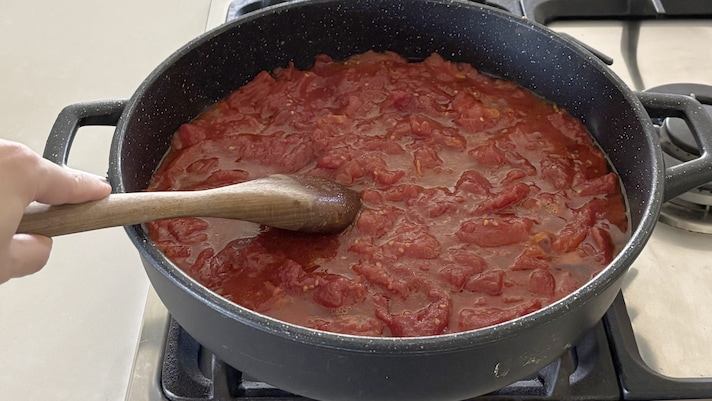
To prepare marinara, first bring a large saucepan of salted water to a boil; then heat a drizzle of extra virgin olive oil in a large pan, add the crushed peeled tomatoes and let it cook on a high flame for about 5 minutes.
To prepare marinara, first bring a large saucepan of salted water to a boil; then heat a drizzle of extra virgin olive oil in a large pan, add the crushed peeled tomatoes and let it cook on a high flame for about 5 minutes.
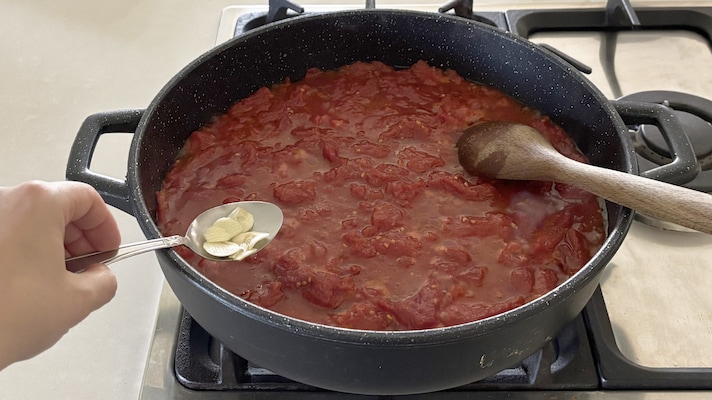
Add the sliced garlic cloves.
Add the sliced garlic cloves.
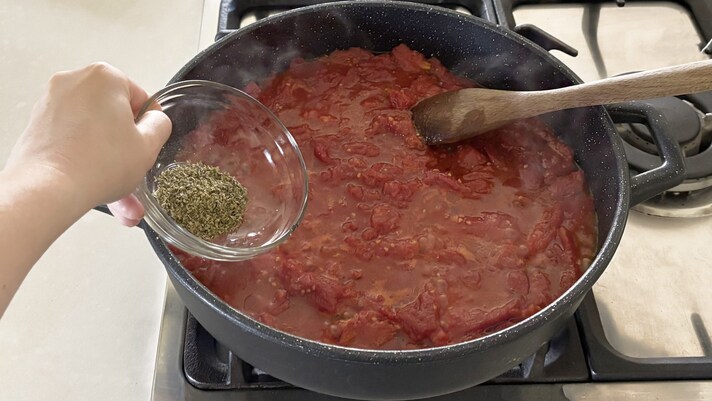
Scent with dried oregano. Season with salt and simmer gently for about 10 minutes. Meanwhile, add the pasta to boiling water and cook for the time indicated on the package.
Scent with dried oregano. Season with salt and simmer gently for about 10 minutes. Meanwhile, add the pasta to boiling water and cook for the time indicated on the package.
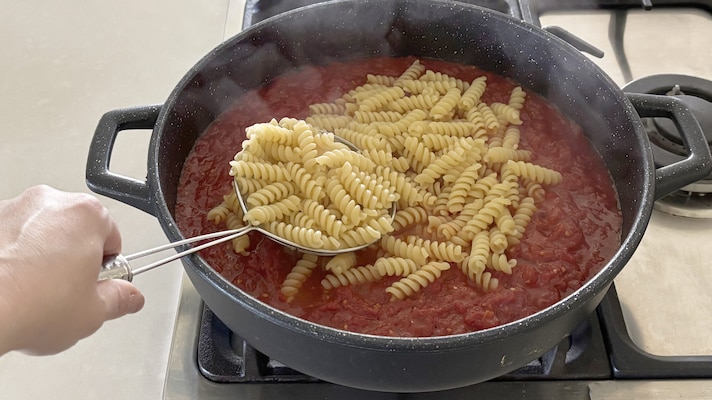
Drain the pasta al dente and transfer it directly into the pan with the sauce.
Drain the pasta al dente and transfer it directly into the pan with the sauce.
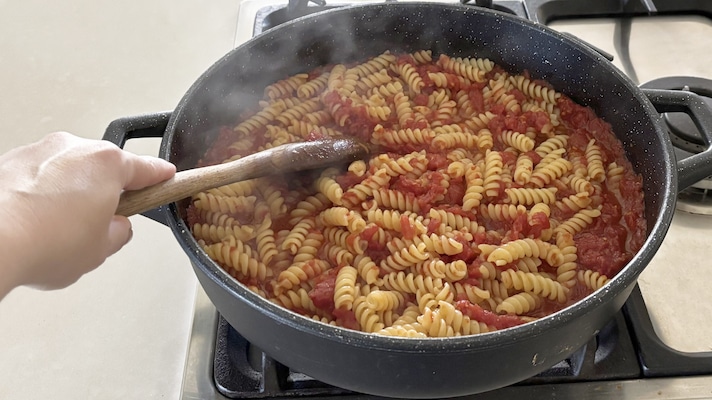
Mix carefully.
Mix carefully.
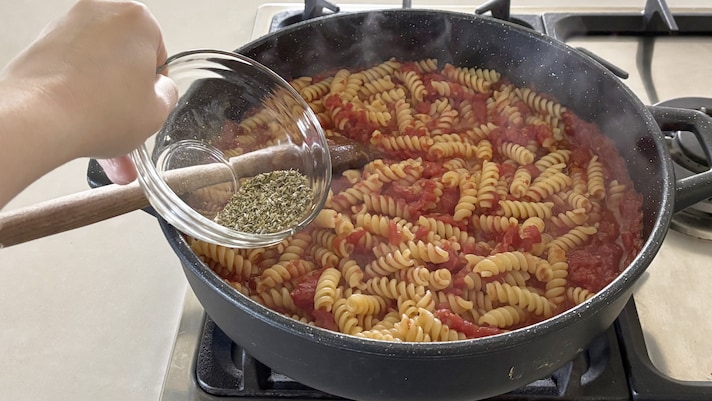
Sprinkle with more dried oregano, if desired, mix with a ladle and turn off the heat.
Sprinkle with more dried oregano, if desired, mix with a ladle and turn off the heat.
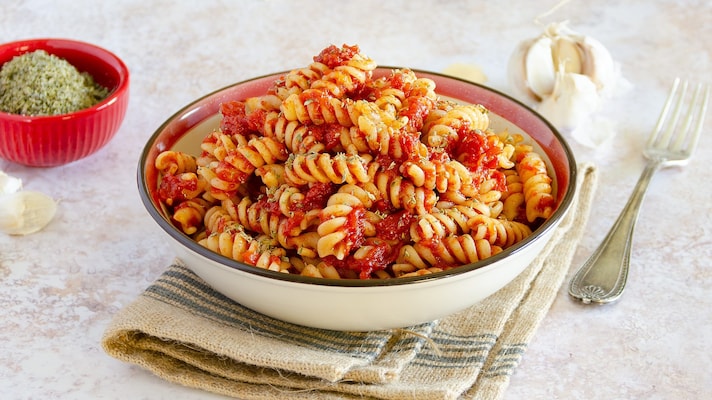
Enjoy it immediately, hot and steaming.
Enjoy it immediately, hot and steaming.
;Resize,width=767;)
